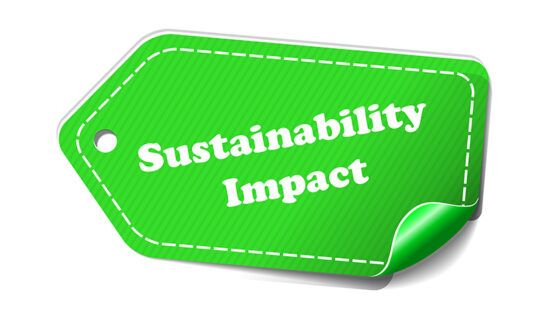One of the few highlights of 2020 was the success of sustainable funds, which saw both record inflows and strong performance compared with traditional funds. The narrative around sustainable investment shifted further towards one of ‘win-win’, where investors no longer need to compromise on returns in order to invest for good.
Flows into sustainable funds have continued to accelerate in 2021, with AUM reaching an all-time high of €1.3trn in Q1, according to Morningstar. Unlike 2020, however, the performance story hasn’t held up so well this year. In a reversal on 2020 trends, strong performance from the energy sector and weaker returns from technology saw many ESG funds underperform their traditional peers in Q1. So, does this mean we can’t have it all after all?
Intuitively, it makes sense that companies with sustainable business practices are likely to outperform in the long term, but in reality, we don’t yet know enough. The search for reliable evidence around the link between ESG factors and performance continues, but for every study that shows a positive correlation, another raises doubts. ESG investing has such a short track record in the grand scheme of investment performance (the existence of certain equity factors for example, as unearthed by Fama & French, is based on decades of return data) that it seems unlikely this matter will be resolved conclusively any time soon.
The challenges of measuring success
One of the obvious challenges of assessing the link between ESG and performance is the divergence in views around what constitutes a good ESG investment – a study by MIT Sloan found that the correlation between prominent ESG rating providers was on average just 0.61, making for a noisy and confusing market. If we can’t agree on how to define ESG, how can we meaningfully benchmark it? Add to this the myriad of different approaches and strategies across funds labelled as ESG or sustainable, and peer group comparisons are arguably even less helpful.
The temptation then is to compare ESG funds to traditional indices and many managers do just this when presenting to clients. But claiming to be able to outperform the wider market is potentially misleading. As witnessed in 2020 and 2021, discrete outperformance versus the market may well depend on the relative performance of exclusion lists and the direction of the oil price, at least while oil continues to play such a key role in the economy. Investors who expect consistent outperformance risk building unrealistic expectations and may even be tempted to disinvest.
As an example, Japan’s $1.6trn Government Pension Investment Fund, which has been increasingly investing in ESG strategies since 2017, was recently reported to be rethinking its ESG investments due to poor performance compared with the Topix index, notably over the past year. Abandoning an ESG strategy based on short-term performance seems premature, especially given that delivering environmental and social change tends to be a slow, long-term process.
See also: – Morningstar’s Kemp: Don’t be put off by short-term underperformance in ESG
Time to shift focus
But is it right to compare sustainable funds against traditional benchmarks in the first place? I do not believe so. First, in terms of returns, traditional benchmarks don’t allow for meaningful comparison, since they tend to contain a substantial exposure to companies that are not eligible for a sustainable investment approach. Therefore, it’s important to identify the specific ESG benchmark that’s relevant to any chosen strategy to assess its individual performance and the manager’s skill. When looking at performance in a broader portfolio context, where direct comparisons between ESG funds are harder to make, risk-adjusted measures of return, such as Sharpe, Treynor, Sortino and M2 ratios, can be used to assess relative levels of skill between managers.
Second, a focus on returns ignores a key part of the equation. Sustainable funds offer the potential not just for returns, but also to make a positive impact on the world. If we assume that investors are not simply box-ticking and that fund managers are not just greenwashing their proposition and genuinely wish to make a difference, then something quite transformative occurs. Investors’ utility function (the reward expected from investing) evolves from being univariate (depending on return only) to bivariate (depending on both return and impact). It is critical to find a way to measure the success of – and make decisions based on – both variables, and to not focus solely on return.
Be committed, transparent and keep building up momentum
The sustainable investment universe is complex, disparate and rapidly evolving, so broad claims around performance should be taken with a degree of cynicism for now. Fund managers need to be honest with investors about how they invest, what they can realistically achieve and educate them about what a sustainable investment journey really entails.
When selecting funds, investors need to ensure they understand both the return and impact side of what managers can deliver and not get distracted by traditional benchmarks or short-term performance. Sustainable investment is a long-term game and one we know is necessary for our world to endure. Let’s make sure that the current gathering momentum is not derailed by unrealistic promises and irrelevant comparisons.








